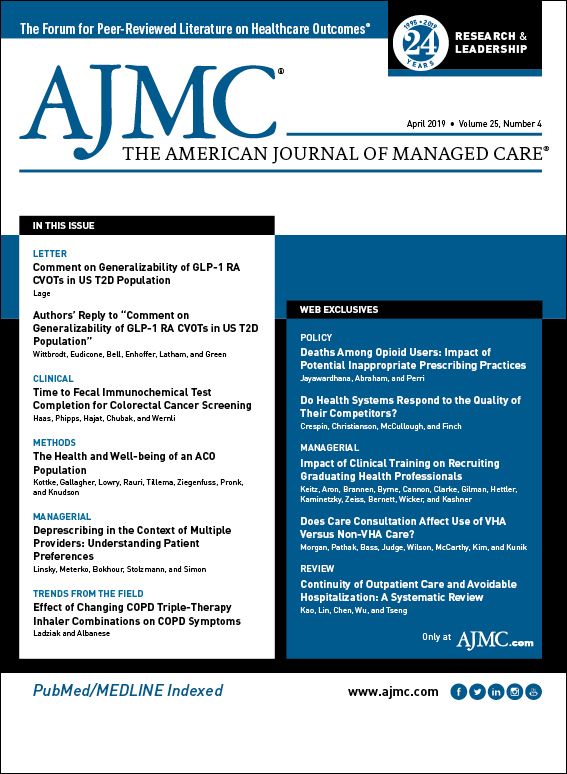- Center on Health Equity & Access
- Clinical
- Health Care Cost
- Health Care Delivery
- Insurance
- Policy
- Technology
- Value-Based Care
From the Editorial Board: Kavita K. Patel, MD, MS
The opioid epidemic is one of America’s greatest public health crises, with approximately 131 opioid overdose deaths each day. The effects of the opioid crisis are costly—an estimated $504 billion in 2015—placing burdens on families, the workplace, and communities. As awareness increases, there have been a number of important steps to begin tackling this overwhelming problem, including broader access and education around naloxone, medication-assisted treatment, encouragement of integrated behavioral health resources in primary care settings, and efforts to decrease the associated stigma.
Despite this, we still face incredible challenges, including how best to identify policies and practice-based interventions at the provider level; many providers have still been reluctant to tackle this complex issue, particularly in primary care or emergency/urgent care settings in which the throughput of the organization is a key metric. In a fee-for-service (FFS) environment, where volume is prioritized and individual compensation is tied to relative value units, this can result in the “7-minute clinic visit,” often with very little time to address the complex nature of opioid use and substance disorders, much less screen for patients who are at high risk of opioid misuse and abuse. Compounding this barrier is the highly fragmented nature of most of our clinical care environments: disparate medical record systems, systems that rarely communicate, and the burden of coordination left in a patient’s hands with little to no guidance other than random luck or chance that a staff person or provider is able to help navigate various channels.
As our country tries to move from volume to value, it is important to understand if such a transition might indeed have an effect on improving the experience of patients at high risk for opioid misuse/use and, ultimately, their health outcomes. The Center for Medicare and Medicaid Innovation (CMMI) has started to align incentives for value-based care and the multidisciplinary integrated environment for Medicaid beneficiaries who are pregnant. Still in its early stages, the Maternal Opioid Misuse (MOM) model will leverage CMMI’s significant authorities granted by the Affordable Care Act in an effort to promote integration and coordination with financial incentives for the state and care partners. The fact that the initial value-based models are in Medicaid is not by chance; a large proportion of opioid deaths occur in the Medicaid population. As managed care Medicaid increases its dominance throughout the country (it is estimated that more than 50% of the states have at least 85% of their eligible population in a managed care organization), a natural experiment is taking place to answer whether increased management of care is better than traditional FFS.
In this issue of The American Journal of Managed Care®, Jayawardhana et al offer important insights in the Georgia Medicaid population with respect to opioid prescribing practices and in doing so, have identified that, at least in 1 state, it would appear that FFS patients fare worse than those in managed care environments. Certainly, a number of confounding variables are present, including how to best account for the differences in observable traits, but the notion that the degree to which your care is managed or incentivized by a different mechanism than FFS could affect outcomes should be a clarion call for policy makers to explore what aspects of management are important and how to scale such practices even in a FFS setting. As each hour passes by and needless deaths occur, there is little time to waste and more practical research will be required to inform alternative payment model development in the United States.

Trends in Hospital Pricing for Vulnerable Emergency Department Users, 2021-2023
December 4th 2025Self-pay emergency department prices rose significantly from 2021 to 2023, especially at for-profit and system-affiliated hospitals, highlighting growing affordability challenges for uninsured and underinsured patients.
Read More
Integrated Care for Chronic Conditions: A Randomized Care Management Trial
December 3rd 2025The authors sought to understand the differential impact of payer-led community-based care management approaches on stakeholder-oriented outcomes for publicly insured adults with multiple chronic conditions.
Read More

